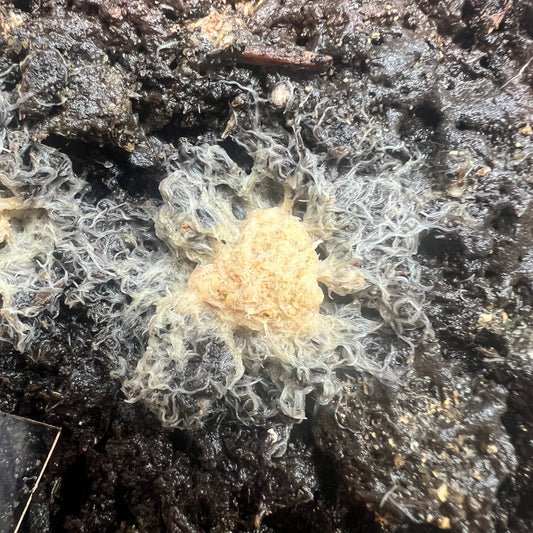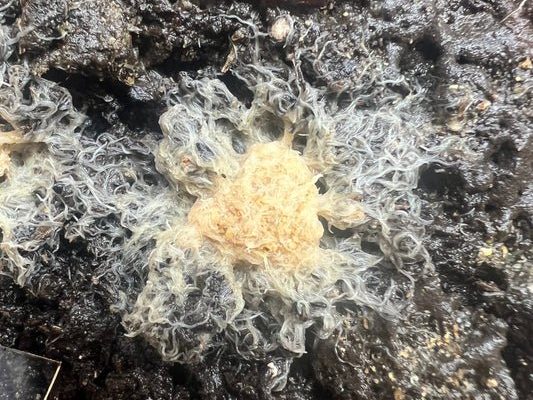
Grindal worms, scientifically known as *Enchytraeus buchholzi*, are small, white annelids that thrive in moist environments. These live foods are particularly popular among aquarium enthusiasts, who often use them to feed fish and other aquatic pets. But their role goes beyond the aquarium; they can play a significant part in soil health and nutrient cycling. So, are these tiny worms just some harmless food source, or do they have deeper implications for our ecosystems? Let’s break down the ecological benefits and drawbacks of Grindal worm populations.
What Are Grindal Worms?
Before we get into the nitty-gritty of their ecological impact, it’s helpful to know exactly what Grindal worms are. They typically measure about 1-3 cm in length, making them a bit smaller than your average earthworm. Their pale color comes from their lack of pigmentation, which gives them that distinctive look. If you think of earthworms as the heavyweights of soil aeration, Grindal worms are like the lightweight champions, working quietly beneath the surface.
These worms prefer a rich, compost-like environment, which means they thrive in areas that are high in organic material. This quality makes them an excellent choice for composting systems or as part of a balanced diet for your aquarium fish. Plus, they reproduce quickly, which means they can provide a steady food source if managed properly.
You might be wondering how they fit into the larger ecosystem. Well, these worms contribute to soil aeration and nutrient cycling, playing a significant role in maintaining healthy soil. Just like a sponge soaking up water, they help retain moisture and nutrients, benefiting the plants that rely on these resources.
The Benefits of Grindal Worms
1. Nutrient Cycling
Grindal worms are essential for nutrient cycling in ecosystems. They break down organic matter, which helps release nutrients back into the soil. This process is like recycling for the natural world! As they consume decomposing food and plant material, they convert it into nutrient-rich castings, also known as worm poop.
These castings are often packed with beneficial microorganisms, making them a fantastic natural fertilizer. When added to the soil, this fertilizer enhances plant growth by providing essential nutrients like nitrogen and phosphorus. Imagine planting your favorite flowers or vegetables and knowing that Grindal worms played a role in their vibrant blooms!
2. Soil Aeration
Ever heard of the term “soil aeration”? It’s basically the process of getting air, water, and nutrients into the soil. Think of this as a spa day for the soil! Grindal worms, along with their larger cousins, help aerate the soil as they move around. Their burrowing and tunneling create spaces in the ground, allowing roots to penetrate more easily.
This aeration is particularly beneficial for plant roots, as it reduces soil compaction and improves drainage. Healthy, well-aerated soil supports stronger root systems, which in turn leads to healthier plants. It’s like giving your garden a breath of fresh air!
3. Feed for Aquatic Life
If you’re an aquarium owner, using Grindal worms as fish food is one of the biggest advantages. They’re rich in protein and other essential nutrients, making them a great dietary option for many species. Fish love them, and this means they’re not just a food source but also a way to encourage a natural feeding behavior.
They’re easy to culture at home, so if you decide to grow your own, it’s like having a constant supply of fresh food for your aquatic pets. This can lead to happier, healthier fish, and let’s face it, watching them thrive is very rewarding!
The Drawbacks of Grindal Worms
While the benefits are considerable, there are drawbacks to having Grindal worms in our ecosystems. It’s essential to weigh the pros and cons to ensure a balanced view.
1. Overpopulation Risks
Here’s the thing: Grindal worms reproduce quickly. In the right conditions, their populations can explode, leading to overpopulation. This can cause imbalances in local ecosystems, particularly if other species can’t compete for resources like food and space.
An overcrowded environment can lead to unhealthy conditions for all organisms involved. For example, too many worms could deplete food sources too quickly, negatively impacting plants and other soil organisms. Think of it like a buffet that gets cleaned out faster than you can say “all-you-can-eat.”
2. Potential Disease Transmission
Grindal worms can also be carriers of diseases, especially if their populations grow unchecked. Just as overcrowded areas among humans can lead to health issues, the same goes for worms. They can spread pathogens that might harm local flora and fauna, creating a ripple effect in the ecosystem.
For example, certain diseases can damage plant roots, weaken plants, and make them more susceptible to pests. It’s essential to keep a close eye on their populations and ensure they’re well-managed to avoid these issues.
3. Competition With Native Species
Another potential drawback is the competition they pose to native worm species. When Grindal worms are introduced into an area where they don’t naturally occur, they can outcompete local species for resources. This can lead to a decline in native populations, diminishing biodiversity.
Biodiversity is crucial for maintaining healthy ecosystems. A diverse range of species means better resilience and stability. If Grindal worms take over, it might lead to a less balanced environment. It’s a classic case of “one species thriving at the cost of another.”
Best Practices for Managing Grindal Worm Populations
So, how do you enjoy the benefits of Grindal worms while minimizing their drawbacks? Here are some helpful tips to keep their populations in check.
1. Monitor Population Density
If you’re cultivating Grindal worms, it’s essential to keep an eye on their numbers. Regular checks can help determine if their population is getting out of control. You can do this by simply observing their growth rate and adjusting feeding conditions or harvesting their castings regularly.
A balanced approach ensures you can keep enjoying their benefits without letting them take over. Keep in mind that if you notice a sudden spike in their numbers, it might be time to scale back.
2. Maintain a Balanced Environment
Creating a healthy habitat for your Grindal worms is crucial. Ensure the environment includes a mix of organic materials for them to feed on, like decomposing leaves or food scraps. This not only supports their growth but also helps maintain microbial diversity, which is vital for disease resistance.
Think of your worm setup as an ecosystem in itself—balance is key! A well-maintained environment will lead to a more sustainable and resilient Grindal worm population.
3. Introduce Them Responsibly
If you plan to introduce Grindal worms into specific environments, do so carefully. Make sure the location is suitable for their survival but also consider potential impacts on native species. Ideally, stick to closed environments like aquariums or compost bins where they can thrive without disrupting local ecosystems.
It’s a bit like introducing a new friend into a group—make sure they’ll fit in without causing any rifts!
Grindal worms are fascinating little critters that offer a range of ecological benefits. From nutrient cycling and soil aeration to being a tasty treat for your fish, they play a significant role in maintaining healthy ecosystems. However, it’s important to remember that their rapid reproduction and potential to disrupt local environments can also create challenges.
By managing their populations responsibly and creating balanced habitats, we can enjoy their benefits while keeping our ecosystems safe. So, the next time you hear about those little worms making waves (or, you know, helping things grow), you’ll understand just how important they truly are!

